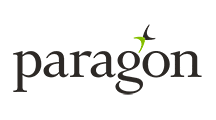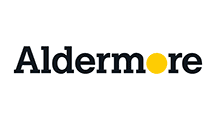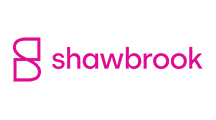Can I get a buy to let mortgage?
Yes, most people can get a buy to let mortgage. You will need a deposit of at least 15% of the property value you are buying, with more mortgages options when you have a bigger deposit of 20%-25% or more.
The most other important factor is the rent the property will generate, because this income is expected to cover the mortgage payments. Your rent typically needs to be between 125% and 145% of the mortgage payment (it must be more than the actual payment to make sure the mortgage is affordable). Your personal income is less important.
Personal income is only a factor for first time buyers who want a buy to let mortgage. Lenders will assess your ability to repay the mortgage as though it were a mortgage for your home. This is not the case for other borrowers.
Factors that may impact you getting a buy to let mortgage
- Some types of adverse credit
- Not having enough money for a deposit
- The value of the property being less than you expected
If you are ready to start a mortgage application, chat to our advisors on live chat, via the phone, or get a call-back, we're here to help.
We work with over 80 mortgage lenders, including:
Compare today's buy to let mortgage rates:
Eligibility for a buy to let mortgage
- First time buyers to experienced landlords
- You must be over 18 years old
- Minimum deposit 15% of the property value
- Upper age limits at application are flexible
- Low personal incomes are accepted
- Property, pension and employment income is OK
Buy to let mortgage deals that are right for you
Buy to let mortgages are for properties that will be rented out to a third party you are not related to. When you are looking for a mortgage, you will probably need to know a couple of key things from us:
- Can you help with my specific scenario?
- Are you going to get me a good deal?
As a broker that only deals with landlord finance, you can be sure that we have the expertise you need to help you with your specific scenario.
Rental property finance is our primary focus, which means you are dealing with tried and tested experts. For even the most complex cases, if there is a deal out there from a lender, we will find it for you.
We work with a spread of lenders from the high street to specialists and challenger banks (lenders looking to compete by offering deals for specific client needs), so whatever you need, we have got it covered.
We can help all sorts of investors, whether you are applying in personal name or via a limited company, from the UK, or as an expat. We can help you buy or remortgage all sorts of properties, from a 2-bedroom terrace, to a 20-bedroom House of Multiple Occupation and everything in between.
We can help you with...
- Borrow up to 85% loan to value (LTV)
- No minimum income options
- Lenders with no upper age limits
- Flexible affordability calculations
- 2, 3, 5, and 10 year deal periods
- Cashback, free valuation and other incentives available
- Borrowing based on rental income from property
- Switch from residential mortgage to buy to let mortgage
- Unlimited portfolio sizes
- Remortgage to like for like loan, or to raise capital
- Houses of Multiple Occupation (HMO) options with no maximum number of bedrooms
- Multi-unit blocks options with no maximum number of units
- Special Purpose Vehicle (SPV) buy to let accepted
- Trading limited company buy to let accepted
- First time buyers accepted
- Repayment or interest-only mortgage payment options
- Finance for property development or auction purchase
Ready to get started?
Your personal advisor will call. Direct lines start 01603. Get today's rates, help, or apply. Lender terms provided in as little as two hours!
Why choose Commercial Trust?

Apply with ease by phone
It couldn't be easier to secure a buy to let mortgage with our expert advisors. Ask all your questions and arrange an application on the phone from your sofa.
World class customer service
We'll find you a great deal and take all the admin work off your shoulders, so you can relax while we get your mortgage completed. All the while giving you progress updates.
Lender decision in 2 hours
By contacting you by phone and email you can get help more quickly than in-person services. It's possible to get you a lender decision in principle in as little as two hours after our call.
Commercial Trust is a member of the Legal & General Mortgage Club.
We chose to work with Legal & General as they are the largest, longest-running club in the UK.
This gives our clients the confidence that their borrowing is with a lender selected by an established and trusted club, who are involved in nearly one in three mortgages processed by intermediaries like us.
Costs involved in a buy to let mortgage
Lenders may charge you for the valuation conducted on your property. They often also charge a product fee, sometimes this can be added to the mortgage.
You will need a conveyancing solicitor who will charge fees. Read our guide to choosing a conveyancing solicitor.
We charge a broker fee for our work. You pay in two parts. A booking fee, once we have found you a mortgage deal, at application. The majority of our fee is paid at completion of the mortgage.
Every mortgage comes with monthly mortgage costs based on the mortgage interest rate the lender charges. These are paid on either an interest-only or capital repayment basis.
How to apply for a buy to let mortgage
1
Tell our advisors about the property you are investing in, your needs and circumstances. If you have credit concerns, chat to us about them, so we can put you with the right lender.
2
Your advisor will find the best possible deal from a search of thousands of products. They will get you a lender decision in principle, this requires a soft credit search (occasionally it is a hard credit search).
3
Your advisor will call to discuss the product they have found for you. You will be presented with one mortgage that is the best match for all your needs and offers you the most cost effective option.
4
On your instruction, your advisor will submit your mortgage application. Your account manager then does all liaison and administrative work to complete the deal, whilst keeping you updated at every step.
What our clients say about us
Frequently asked questions
A buy to let mortgage is a specific loan for landlords or investors who want to purchase a property to rent to someone else. A standard buy to let mortgage is for a single-occupancy house or flat. There are specific types of mortgage for other types of rental property, including houses of multiple occupancy(HMO) or a multi-unit freehold block (MUFB). You can also get holiday let mortgages and products specifically for limited company buy to lets.
A buy to let mortgage is used to purchase a property that will be rented to a third party. A residential mortgage is for a property you plan to occupy. A buy to let mortgage is different as the property is seen as an investment, rather than a place to live. It is similar to a residential mortgage in that you will need to meet certain criteria, and you will have to pay a deposit, but you won’t be able to live in the property yourself.
Buy to let mortgages are for anyone who wants to purchase a property they plan to rent to someone else. These could be first-time property owners or seasoned investors. We can help landlords with portfolios of all shapes and sizes, to find the right buy to let mortgage product for them. Some landlords buy properties through limited companies. There are specific buy to let products for this type of lending.
The minimum deposit for a buy to let from our lenders is currently 15%. This means the maximum borrowing amount is 85% of the property value. This is subject to change. Generally speaking, the more money you can put into a deposit, the greater the range of buy to let mortgage interest rates you will have access to. This is because if the borrower takes on more financial risk, it reduces the risk to the lender.
As a rule, no. You will need a specific buy to let mortgage to purchase a property if you plan to rent it out. Regulated, residential mortgages are not suitable if your sole aim is to rent out your property. Most lenders will have clauses against this in their terms.
Anyone could potentially buy a property and rent it out. However, each mortgage lender will have its own specific lending eligibility criteria. You will need to meet these criteria before you can be approved for their products. You will likely be eligible for a buy to let mortgage if you meet the following:
- You are at least 18 years old
- You can meet the minimum deposit requirements
- You can meet the lender's rental requirements (usually that the rent from the property is 125%-145% of the mortgage payments)
A buy to let mortgage is money from a lender, either a bank or building society, which you use to purchase a property to rent out. You will then be responsible for paying back the money on either an interest-only or capital repayment structure for the loan term. Capital repayment mortgages mean that alongside the interest on the loan, you will be paying off the lump sum you borrowed. You will end up owning the property at the end of the loan term. Interest-only means you are not paying the lump sum so will not own the property at the end of the term.
Yes. You can get a buy to let mortgage as a first time buyer (you have never owned a property of any sort), or as a first time landlord (you own your own home, but have never rented out property).
You can borrow up to 85% of the property loan to value for a buy to let mortgage. You will need to have a 15% deposit. If you do not have 15% in cash, you may be able to borrow against other property you own. Unlike residential mortgages, which are often calculated as a multiple of your salary, buy to let mortgages typically use the rental income to determine the loan. The only exception is for landlords who are first time buyers, where personal income is taken into account.
Some of the restrictions on a buy to let mortgage include not occupying the property yourself, and not renting to family. You will need a deposit of 15% of the property value as a minimum, and possibly 20-25% or more.
Yes. If you plan to move out of your current residential property and want to rent it out, you can switch to a buy to let mortgage. Switching to a buy to let mortgage from a residential one is described as “consumer buy to let”. If you are planning on remortgaging your current property to release equity to buy a new residential property, this is process is called “let to buy”. You can then use the released equity for the deposit on your new home.
There should not be a limit on how many buy to let mortgages you can have. One thing to consider is that some lenders will have different rates for what they consider "portfolio" landlords. This is usually landlords with 4 or more properties, but the definition itself varies between lenders as well. Some lenders may also restrict the amount you borrow from them in total, regardless of how many properties the funding is used for. While others may place a restriction on how many properties they will lend against. This is all down to specific lender requirements and can be discussed with a mortgage advisor.
Buy to let mortgage advice is different from financial advice. Mortgage advice is designed to help you identify the right product from across the market, once you have made the decision to invest in property. Financial advice is likely to be a step before this, where you seek professional help to decide how you want to invest, or what type of investments you would like to make. Another important piece of advice to consider when investing in property is tax advice. This again is a specialist subject and something that falls outside of buy to let mortgage advice. Tax advice may influence whether you choose to buy a property as an individual, or through a limited company.










